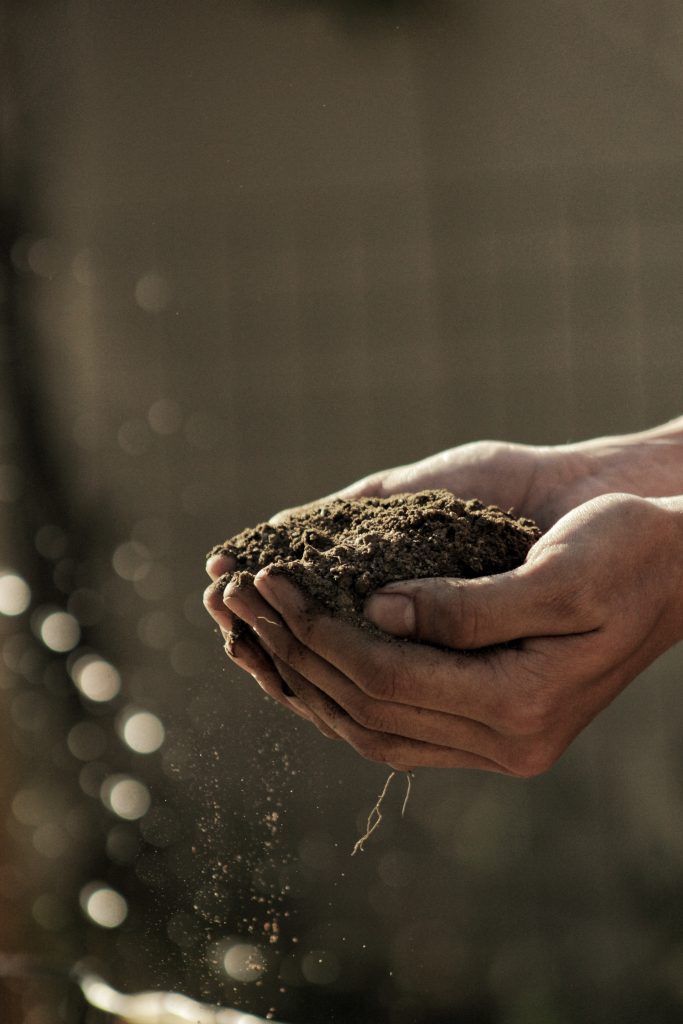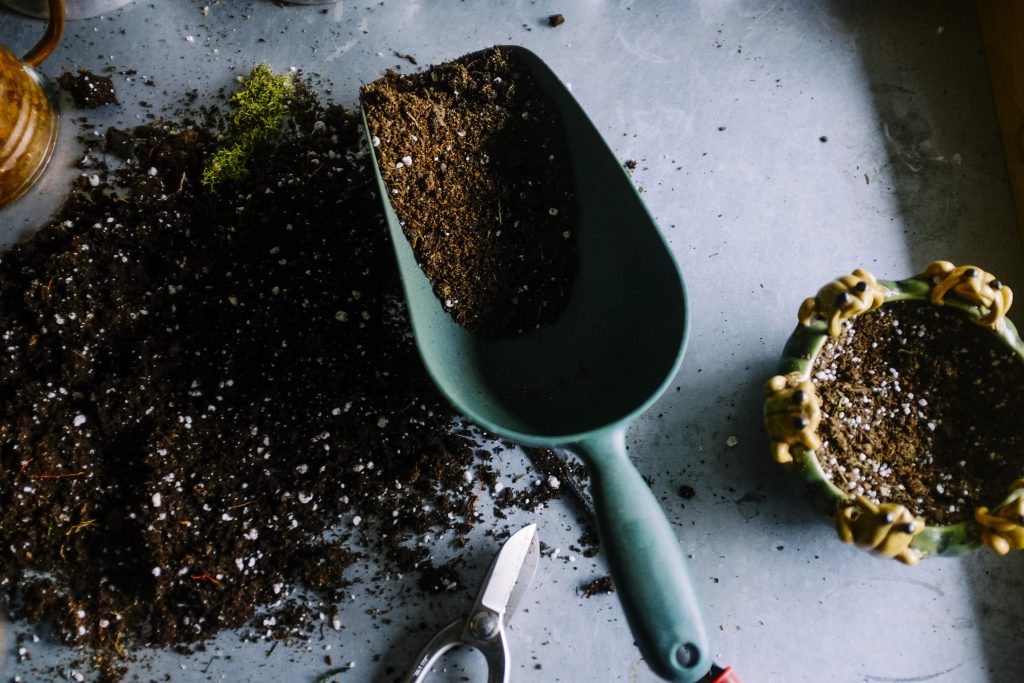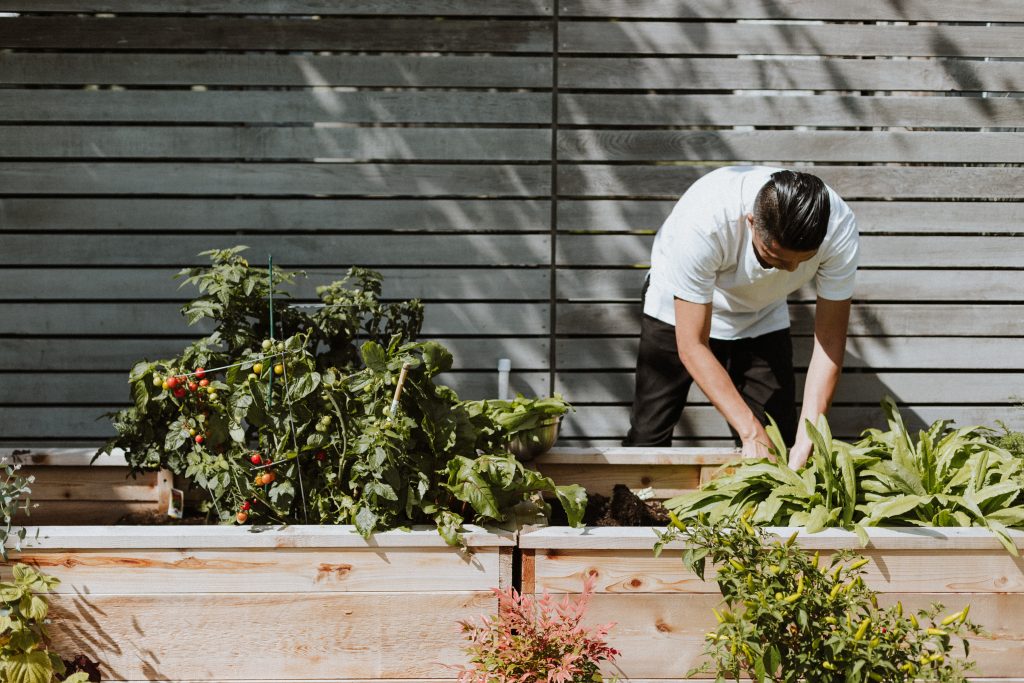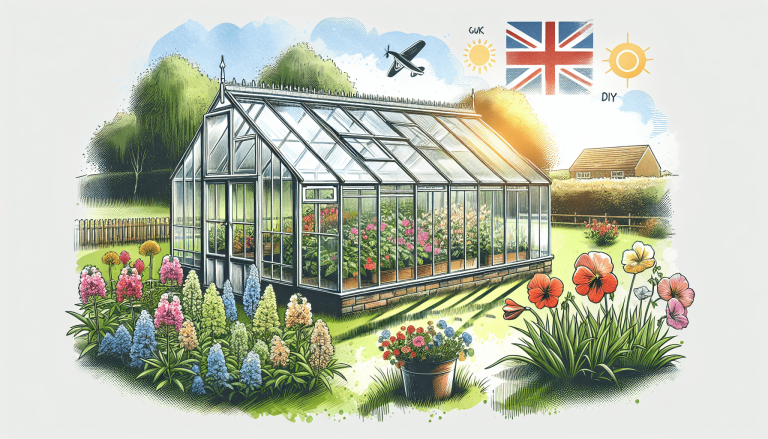Are you a beginner gardener looking to grow your own vegetables? Well, you’re in luck! In this article, we’ll explore a variety of easy-to-grow vegetables that are perfect for beginners like yourself. Whether you have a spacious backyard or a small balcony, these vegetables will thrive and provide you with a bountiful harvest in no time. So, roll up your sleeves and get ready to embark on this exciting journey of growing your own vegetables!
Table of Contents
ToggleLeafy Green Vegetables
Spinach
Spinach is an excellent leafy green vegetable for beginners to grow. It is packed with nutrition and can be grown in both containers and gardens. Spinach prefers cool weather, making it a great choice for early spring and fall planting. You can harvest spinach leaves when they are small and tender, or let them grow larger for a more substantial presence in your salads and dishes.
Lettuce
Lettuce is a versatile and easy-to-grow leafy green vegetable that comes in a variety of shapes, colors, and flavors. It can be grown in containers or directly in the garden and is perfect for growing in small spaces. Lettuce grows quickly and can be harvested by snipping off the outer leaves or cut the entire plant close to the ground. With regular sowing, you can enjoy a continuous harvest of fresh, crispy lettuce throughout the season.
Kale
Kale is a highly nutritious leafy green vegetable that is quite hardy, making it an ideal choice for beginner gardeners. It thrives in cooler temperatures and can withstand light frosts. Kale can be grown in containers or directly in the ground, and its dark, curly leaves add texture and flavor to salads, soups, and stir-fries. Harvest the outer leaves of the plant as they mature, and the inner leaves will continue to grow.
Swiss Chard
Swiss chard is a colorful and versatile leafy green vegetable that is both ornamental and edible. It is easy to grow and can be harvested as baby leaves for salads or as mature leaves for cooking. Swiss chard adds a touch of elegance to any garden with its bright stalks in various shades of white, yellow, pink, and red. This leafy green is also known for its nutritional value, providing a good dose of vitamins and minerals.
Root Vegetables
Carrots
Carrots are a classic root vegetable that is perfect for beginner gardeners. They are relatively low-maintenance and can be grown in containers or directly in the ground. Carrots prefer loose, well-drained soil and require consistent moisture for optimal growth. You can start harvesting baby carrots as soon as they reach the desired size or let them grow to full maturity. The vibrant orange color and sweet flavor of home-grown carrots will make them a favorite in your meals.
Radishes
Radishes are a fast-growing root vegetable that adds a delightful, crisp texture to salads and sandwiches. They are among the easiest vegetables to grow and are suitable for both container gardening and traditional garden beds. Radishes prefer cooler temperatures and can be harvested within a few weeks of planting. They come in various shapes, sizes, and colors, adding visual appeal to your garden while providing a tangy and refreshing taste in your dishes.
Beets
Beets are a versatile and nutritious root vegetable that can be enjoyed both for their greens and their sweet, earthy roots. They are relatively easy to grow and can be sown directly in the garden or started indoors and transplanted. Beets prefer cool weather conditions, making them a great option for early spring and fall gardens. Harvest the greens when they are young and tender, and the roots when they are the desired size. Beets come in different colors, including red, golden, and striped varieties, making them an attractive addition to any plate.
Turnips
Turnips are a fast-growing root vegetable that is perfect for beginner gardeners. They thrive in cool weather conditions, making them an excellent choice for spring and fall planting. Turnips can be grown in containers or directly in the ground and come in various sizes and colors. Both the roots and the leaves of turnips are edible, offering versatility in the kitchen. Harvest the roots when they are tender and crisp, and the greens when they are young and tender.
Cruciferous Vegetables
Broccoli
Broccoli is a popular cruciferous vegetable that is relatively easy to grow and provides a bountiful harvest. It requires full sun and fertile, well-drained soil to thrive. Broccoli can be grown from seeds or transplants, and it’s essential to provide consistent moisture during its growing season. Harvest the main head of broccoli when it reaches a compact size, and side shoots will continue to produce smaller florets. The mild and slightly sweet flavor of home-grown broccoli will elevate your meals and make you proud of your gardening skills.
Cauliflower
Cauliflower is a cool-season vegetable that can be a bit more challenging to grow than other cruciferous vegetables, but with a little extra attention, it can be successfully cultivated by beginners. It requires a fertile soil rich in organic matter and consistent moisture throughout its growing period. Cauliflower heads should be harvested when they reach a full size and have a dense and compact appearance. The delicate taste and creamy texture of home-grown cauliflower make it a delightful addition to a variety of dishes.
Cabbage
Cabbage is a versatile and dependable cruciferous vegetable that can withstand a wide range of growing conditions. It requires full sun and fertile soil to produce large, flavorful heads. Cabbage can be started from seeds or transplants, and it’s important to provide regular moisture to ensure proper growth. Harvest the cabbage heads when they are firm and dense, and the outer leaves are tightly wrapped around the head. Home-grown cabbage can be used in salads, slaws, stir-fries, and even fermented into sauerkraut.
Brussels Sprouts
Brussels sprouts are a unique and rewarding cruciferous vegetable that can be grown by beginners with a bit of patience. They prefer cooler temperatures and a long growing season, making them a perfect selection for fall gardens. Brussels sprouts are typically started from transplants and require fertile soil and consistent moisture for optimal growth. The harvest begins from the bottom of the stalk when the sprouts are firm and about the size of a walnut. Home-grown Brussels sprouts offer a delicious and nutritious addition to your meals, either roasted, sautéed, or steamed.
Herbs
Basil
Basil is an aromatic and flavorful herb that is incredibly easy to grow and a great starter plant for beginners. It thrives in warm weather conditions and requires a well-drained soil and plenty of sunlight. Basil can be grown in containers or directly in the ground and starts from seeds or transplants. Harvest the leaves regularly, pinching off the stems just above the leaf nodes. The fresh, sweet, and slightly peppery taste of home-grown basil will elevate your culinary creations, from pizzas to pesto and beyond.
Parsley
Parsley is a versatile and commonly used herb that can be successfully grown by beginners. It prefers well-drained soil and partial shade, making it suitable for growing in containers or traditional garden beds. Parsley can be grown from seeds or transplants, and it’s important to keep the soil consistently moist during its growing season. Harvest the outer leaves regularly to encourage new growth. The fresh, bright green leaves of home-grown parsley will add a burst of flavor and visual appeal to your dishes.
Cilantro
Cilantro is an herb with a distinctive flavor that can be grown by beginners with ease. It thrives in cool weather and prefers a fertile soil rich in organic matter. Cilantro can be started from seeds and requires consistent moisture for optimal growth. Harvest the leaves when they are young and tender, as the flavor becomes more intense as the plant matures. The fresh, citrusy taste of home-grown cilantro will add a zing to your salsas, guacamole, curries, and many other dishes.
Chives
Chives are a versatile and low-maintenance herb that can be successfully grown by beginners. They prefer well-drained soil and full sun but can tolerate some shade. Chives can be grown from seeds or divisions, and they produce slim, hollow leaves that are rich in flavor. Harvest the leaves by snipping them close to the base. The mild onion-like taste of home-grown chives will enhance your soups, salads, dips, and garnishes, adding a touch of freshness to your meals.
Tomatoes
Cherry Tomatoes
Cherry tomatoes are small and flavorful tomatoes that are easy to grow and perfect for beginners. They can be grown in containers or directly in the ground, and their compact size makes them suitable for balconies, patios, or small gardens. Cherry tomatoes come in various colors and shapes, offering a delightful visual appeal to your garden. Harvest the ripe fruits as they develop a deep, rich color and enjoy their sweet and tangy taste, either straight from the vine or incorporated into salads, pasta dishes, and salsas.
Roma Tomatoes
Roma tomatoes, also known as plum tomatoes, are popular for their firm flesh and rich flavor. They are relatively easy to grow and are great for making sauces and pastes. Roma tomatoes thrive in warm weather and require full sun and fertile soil. They can be grown in containers or directly in the ground. Harvest the tomatoes when they are fully mature, with a deep red color and slightly soft to the touch. Home-grown Roma tomatoes will elevate your Italian dishes to new heights with their intense taste and meaty texture.
Beefsteak Tomatoes
Beefsteak tomatoes are large, juicy tomatoes that are perfect for slicing and using in sandwiches and burgers. While they may require a bit more attention than smaller tomato varieties, they can still be successfully grown by beginners. Beefsteak tomatoes require full sun and fertile soil to produce their substantial fruits. They thrive in warm weather conditions and need consistent moisture for optimal growth. Harvest the tomatoes when they turn a rich, vibrant red and enjoy their sweet, succulent flavor in a variety of dishes.
Heirloom Tomatoes
Heirloom tomatoes are unique and diverse tomato varieties that have been passed down through generations. They come in various colors, shapes, and flavors, offering a truly special gardening experience for beginners. Heirloom tomatoes require full sun and warm weather to flourish, as well as fertile soil with good drainage. They can be grown in containers or directly in the ground, and their vibrant and flavorful fruits will add a splash of color and taste to your salads, sandwiches, and sauces.
Peppers
Bell Peppers
Bell peppers are a versatile and vibrant vegetable that can be grown by beginners with little effort. They come in different colors, including green, red, yellow, and orange, and can be enjoyed raw, roasted, grilled, or stuffed. Bell peppers require warm weather and consistent moisture to thrive. They can be grown in containers or directly in the ground and prefer well-drained soil and full sun. Harvest the peppers when they are firm, glossy, and fully matured. Home-grown bell peppers will add a delicious crunch and refreshing taste to your dishes.
Jalapeno Peppers
Jalapeno peppers are a popular choice for those who enjoy a touch of heat in their meals. They are relatively easy to grow and can be grown in containers or directly in the garden. Jalapeno peppers require warm weather and full sun to develop their spicy flavor. Harvest the peppers when they reach the desired size and are firm to the touch. The fiery kick of home-grown jalapeno peppers will enhance your salsas, sauces, and Mexican-inspired dishes, bringing a burst of flavor to your plate.
Anaheim Peppers
Anaheim peppers are a mild chili pepper that is great for beginners to grow. They are versatile and can be used in various dishes, including salsas, stews, and roasted vegetables. Anaheim peppers require warm weather and grow best in full sun and well-drained soil. They can be grown in containers or directly in the garden. Harvest the peppers when they turn bright green or red, depending on the variety, and are firm to the touch. The mild and smoky flavor of home-grown Anaheim peppers will add depth and character to your culinary creations.
Cayenne Peppers
Cayenne peppers are fiery hot chili peppers that can add a powerful kick to your dishes. They are relatively easy to grow and can be grown in containers or directly in the ground. Cayenne peppers require warm weather and full sun to develop their intense heat. Harvest the peppers when they reach the desired heat level and are fully mature. The spicy punch of home-grown cayenne peppers will elevate your spicy sauces, marinades, and even homemade hot sauces, bringing a burst of heat to your taste buds.
Cucumbers
Pickling Cucumbers
Pickling cucumbers are small, flavorful cucumbers that are perfect for making pickles. They are relatively easy to grow and can be grown in containers or directly in the ground. Pickling cucumbers prefer warm weather and full sun to thrive. Harvest the cucumbers when they are firm, dark green, and the desired size for pickling. Home-grown pickling cucumbers will allow you to create your own delicious and crunchy pickles, adding a tangy and refreshing flavor to your meals.
English Cucumbers
English cucumbers are long and slender cucumbers with a mild, refreshing taste. They are less prone to bitterness and have thinner skin compared to other cucumber varieties. English cucumbers require warm weather and consistent moisture for optimal growth. They can be grown in containers or directly in the ground and prefer well-drained soil and full sun. Harvest the cucumbers when they reach the desired length and are dark green. Home-grown English cucumbers will bring a cool and crisp texture to your salads, sandwiches, and summer beverages.
Lemon Cucumbers
Lemon cucumbers are small, round cucumbers that have a mild, tangy flavor reminiscent of lemon. They are easy to grow and can be enjoyed raw or pickled. Lemon cucumbers require warm weather and full sun to thrive. They can be grown in containers or directly in the ground and prefer well-drained soil. Harvest the cucumbers when they are bright yellow and about the size of a lemon. The unique taste and appearance of home-grown lemon cucumbers will add a splash of brightness and novelty to your culinary creations.
Persian Cucumbers
Persian cucumbers are small, crispy cucumbers with a sweet and mild flavor. They are perfect for fresh eating and make an excellent addition to salads and sandwiches. Persian cucumbers are easy to grow and can be grown in containers or directly in the ground. They require warm weather and full sun, as well as well-drained soil. Harvest the cucumbers when they are the desired size and firmness. The delicate and refreshing taste of home-grown Persian cucumbers will elevate your salads and provide a cooling sensation during hot summer days.
Beans
Green Beans
Green beans, also known as snap beans or string beans, are a classic and easy-to-grow vegetable for beginners. They are productive plants that provide a bountiful harvest throughout the growing season. Green beans require warm weather and full sun to thrive, as well as well-drained soil. They can be grown in containers or directly in the ground. Harvest the beans when they are still tender and the pods are crisp but not woody. Home-grown green beans will add a delightful crunch and earthy flavor to your stir-fries, salads, and side dishes.
Bush Beans
Bush beans are a compact variety of green beans that are perfect for small gardens or container gardening. They require less space than pole beans and do not require trellises or support. Bush beans share the same growing requirements as green beans, preferring warm weather, full sun, and well-drained soil. Harvest the beans when they are firm, but before the seeds inside begin to bulge. The convenience and productivity of home-grown bush beans will provide you with a constant supply of fresh and delicious beans throughout the season.
Fava Beans
Fava beans, also known as broad beans, are a unique and nutritious legume that can be grown by beginners. They are cool-season crops that can tolerate colder temperatures, making them ideal for early spring or fall planting. Fava beans require fertile soil and full sun to thrive. Harvest the beans when they are plump and firm inside the large pods. The rich and creamy taste of home-grown fava beans will add substance and depth to your soups, stews, and Mediterranean-inspired dishes.
Snap Peas
Snap peas are a delightful and versatile legume that can be enjoyed both raw and cooked. They are easy to grow and perfect for beginner gardeners. Snap peas require cool weather and full sun to thrive, as well as well-drained soil. They can be grown in containers or directly in the ground. Harvest the peas when the pods are fully formed and the peas inside have developed but are still crisp and tender. The sweet and crunchy flavor of home-grown snap peas will provide a satisfying snack and a tasty addition to salads, stir-fries, and side dishes.
Zucchini and Summer Squash
Zucchini
Zucchini is a versatile and prolific vegetable that is perfect for beginners. It is easy to grow and can produce an abundant harvest throughout the summer. Zucchini requires warm weather and full sun, as well as well-drained soil. It can be grown in containers or directly in the ground. Harvest the zucchini when they are still small and tender, as they become woody and less flavorful when they grow too large. The mild and slightly sweet taste of home-grown zucchini will add a refreshing touch to your stir-fries, pasta dishes, and baked goods.
Yellow Squash
Yellow squash, also known as summer squash, is a vibrant and delicious vegetable that is easy to grow. It has a similar growing requirement as zucchini, preferring warm weather, full sun, and well-drained soil. Yellow squash can be grown in containers or directly in the ground. Harvest the squash when they are still young and tender, as they become tough and seedy when allowed to grow too large. The bright and sunny color of home-grown yellow squash will bring an inviting warmth to your dishes, whether grilled, sautéed, or baked.
Crookneck Squash
Crookneck squash is a unique and flavorful variety of summer squash that can add a touch of whimsy to your garden and meals. It has a distinct curved neck and a mild, buttery taste. Crookneck squash requires warm weather, full sun, and well-drained soil to thrive. It can be grown in containers or directly in the ground. Harvest the squash when they are small and tender, as they become less flavorful and develop a tougher texture as they mature. The exceptional taste and striking appearance of home-grown crookneck squash will elevate your dishes and delight your taste buds.
Pattypan Squash
Pattypan squash is a fun and visually appealing variety of summer squash that can add excitement to your garden and dinner table. It comes in various colors, including yellow, green, and even striped varieties. Pattypan squash shares the same growing requirements as other summer squash, preferring warm weather, full sun, and well-drained soil. Harvest the squash when they are still small and tender for the best flavor and texture. The unique shape and vibrant colors of home-grown pattypan squash will bring a whimsical touch to your dishes, whether grilled, stuffed, or roasted.
Onions and Garlic
Green Onions
Green onions, also known as scallions or spring onions, are a versatile and easy-to-grow member of the onion family. They have a milder and more delicate flavor compared to fully matured onions. Green onions can be grown from seeds or sets and prefer well-drained soil and full sun. Harvest the onions when they have developed the desired size of both the white bulbs and the green tops. The fresh and zesty taste of home-grown green onions will lend a burst of flavor to your salads, stir-fries, and garnishes.
White Onions
White onions are a staple in many culinary dishes and can be successfully grown by beginners. They require well-drained soil, full sun, and consistent moisture to thrive. White onions can be started from seeds or sets and require a longer growing season. Harvest the onions when the tops have fallen over and the bulbs have reached their mature size. The pungent and slightly sweet flavor of home-grown white onions will elevate your soups, stews, salsas, and a variety of other dishes.
Red Onions
Red onions are a popular choice for their vibrant color and mild yet distinct flavor. They are easy to grow and can be started from seeds or sets. Red onions prefer well-drained soil, full sun, and consistent moisture for optimal growth. Harvest the onions when the tops have fallen over and the bulbs have fully matured and developed their characteristic red hue. The crisp texture and bold taste of home-grown red onions will enhance your salads, sandwiches, and grilled dishes with their delightful flavor profile.
Garlic
Garlic is a flavorful and aromatic vegetable that can be grown by beginners with great success. It requires fertile, well-drained soil, full sun, and consistent moisture to thrive. Garlic is typically planted in the fall and harvested the following summer when the foliage begins to dry out. The bulbs can be dried and stored for long periods, allowing you to enjoy the rich and pungent taste of home-grown garlic throughout the year. The robust and savory flavor of freshly harvested garlic will elevate your culinary creations and provide a distinct and satisfying taste experience.
In conclusion, there are numerous easy-to-grow vegetables that are perfect for beginners. From leafy green vegetables like spinach and kale to root vegetables like carrots and beets, there is a wide range of options to choose from. Cruciferous vegetables like broccoli and cabbage, herbs like basil and cilantro, and even tomatoes, peppers, cucumbers, beans, zucchini, and summer squash, and onions and garlic offer endless possibilities for delicious home-grown produce. Whether you have a small garden, a balcony, or even just a few containers, you can enjoy the satisfaction of growing your own fresh and flavorful vegetables right at home. So roll up your sleeves, get your hands dirty, and embark on this rewarding journey of gardening. Happy growing!









